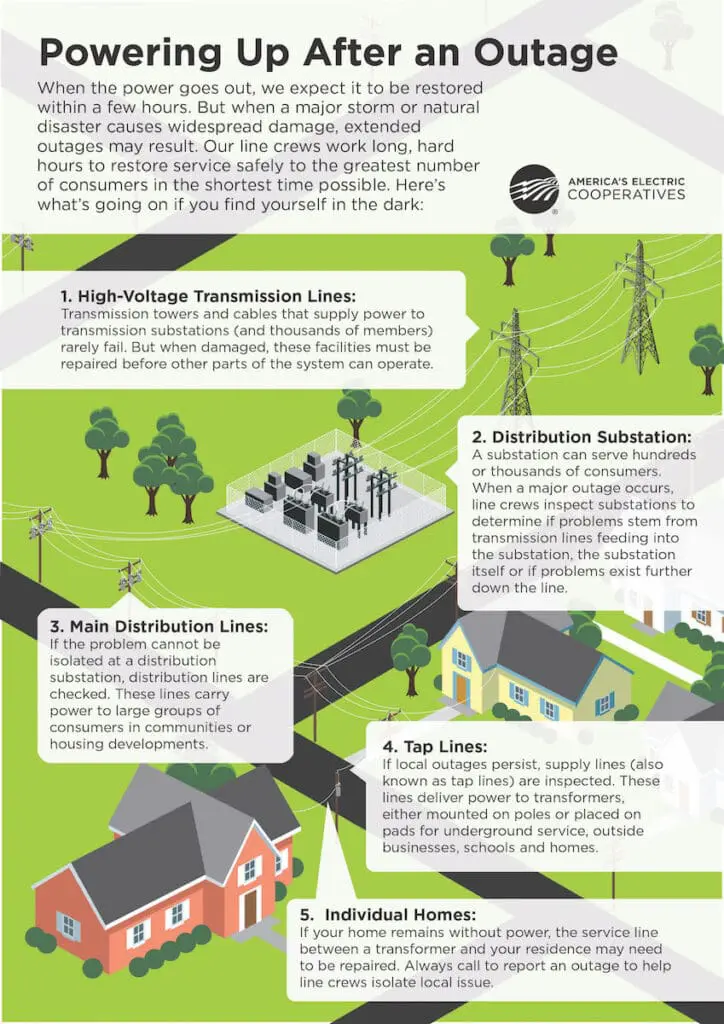Watch video to learn more about the steps to restoring power.
Here are the 5 steps we take when there’s an outage in our service area.
-
High-Voltage Transmission Lines
These lines supply power to transmission substations and thousands of members. If they are damaged, they must be repaired first because they are essential for the rest of the system to function. -
Distribution Substation
Substations serve hundreds or thousands of consumers. If outages occur, crews inspect substations to identify if problems stem from transmission lines or the substation itself. -
Main Distribution Lines
These lines carry power to large groups of consumers in communities or housing developments. If a problem is not isolated at the substation, crews check these lines next. -
Tap Lines
Also known as supply lines, these deliver power to transformers, servicing businesses, schools, and homes. Crews inspect these lines if outages persist. -
Individual Homes
If power remains out for an individual home, the service line between the transformer and the residence may need to be repaired. Always report outages to help crews isolate the issue.
Restoring power after a major outage starts with the largest components of the grid, like transmission lines and substations, and works down to individual homes. Crews prioritize repairs to bring power back to the greatest number of people as quickly and safely as possible.

